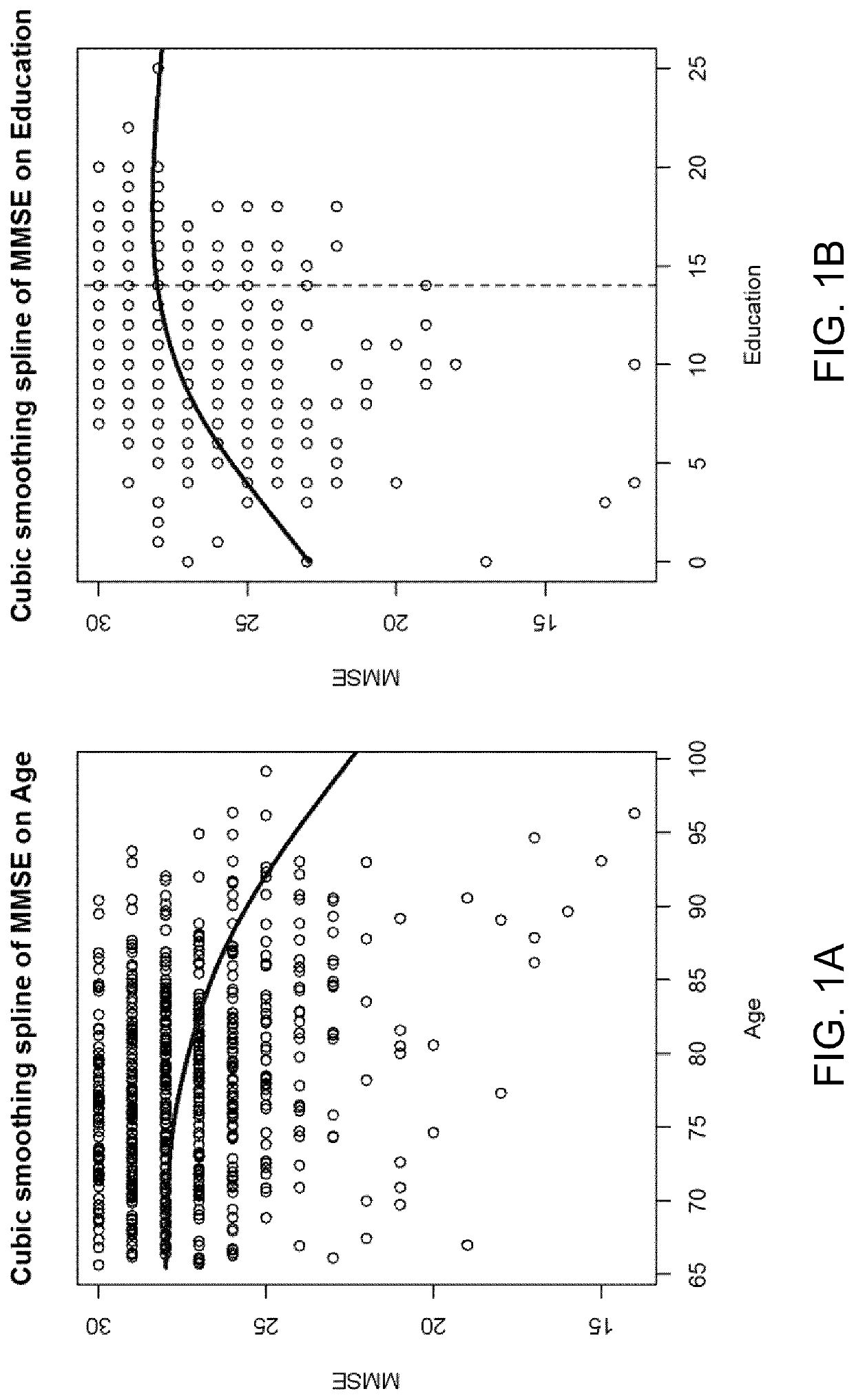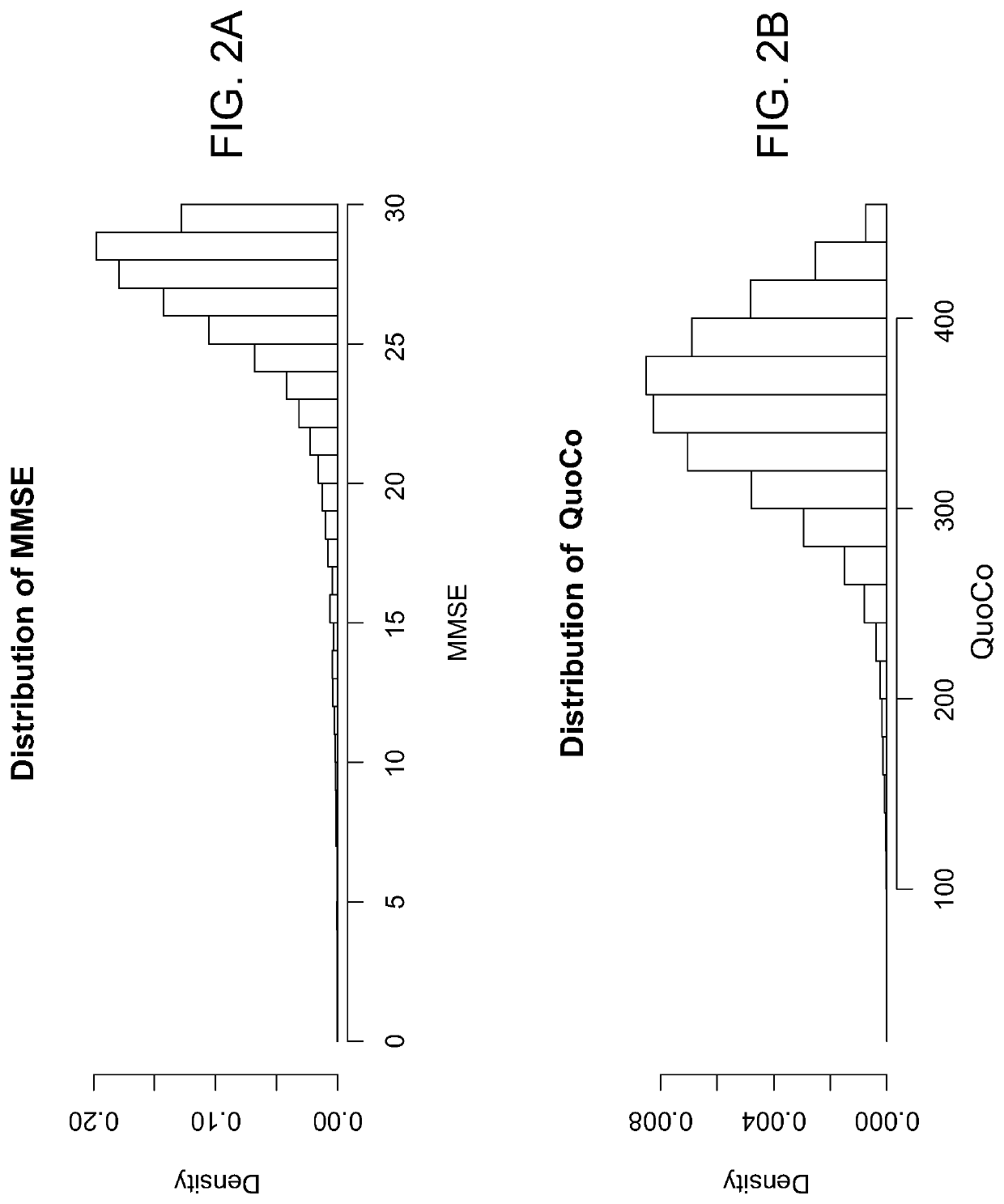Method for generating cognitive decline detection tool, method for measuring cognitive decline and tool for measuring same
a detection tool and cognitive decline technology, applied in the field of medical science, diagnostic recording/measuring, and cognitive decline detection tools, can solve the problems of irreversible changes in cognition and functional abilities, no curative treatment for alzheimer's disease, and serious threat to public health
- Summary
- Abstract
- Description
- Claims
- Application Information
AI Technical Summary
Benefits of technology
Problems solved by technology
Method used
Image
Examples
example 1
ting
Methods
Study Samples
[0086]The study used two samples of participants. First, a training sample from the CSHA which was used for model building. Second, a validation sample from the NACC's UDS which was used for external validation.
[0087]The training sample was composed of participants from the CSHA, a major Canadian endeavor conducted to estimate the prevalence and incidence of dementia and its subtypes by age group in five Canadian regions. A representative sample of 9,008 patients aged 65 and over was randomly selected from Medicare lists in nine provinces or from the Enumeration Composite Record in Ontario and was first interviewed in February 1991. This study was approved by institutional review boards at all 18 participating Canadian centers, grouped in five geographic regions (British Columbia, the Prairies, Ontario, Quebec and the Atlantic region). Written informed consent was obtained from all participants or their legal representatives. Of the 9,008 participants, patien...
example 2
nt of Disability, Dementia, and Severe Cognitive Impairment in CSHA
[0092]The training sample is a very well-studied sample of HC. Eligibility criteria of the CSHA are extensively described in previous publications. Diagnostic criteria for dementia followed the fourth revision of the Diagnostic and Statistical Manual of Mental Disorders, and those for AD were based on the criteria of the National Institute of Neurological and Communicative Disorders and Stroke and the Alzheimer's Disease and Related Disorders Association.
[0093]In brief, a nurse first registered the patients, completed consent forms, administered the Modified Mini-Mental State (or 3MS) exam, tested hearing, vision and vital signs, recorded height, weight and medication use, and obtained the patient's cognitive and family history from a relative, using section H of the Cambridge Mental Disorders of the Elderly Examination. Second, a psychometrician, blind to the 3MS score from the interview, administered a battery of n...
example 3
al Modeling
[0095]Initial analyses of the training sample from CSHA suggested that a linear model taking into account age and education could predict MMSE scores. Considering that patients had up to three measures in the CSHA, the model was investigated using repeated measures regression analyses. Three correlation structures were explored (compound symmetry, order 1 autoregressive, and variance components) and compound symmetry, which presented the lowest AIC (Akaike Information Criterion) was chosen. Attempt to extract a theoretical working model from the data-driven results were performed. All analyses were performed using SAS 9.4.
[0096]The relationship between predictors of cognitive decline and MMSE were initially explored. FIGS. 1a and 1b illustrate the relationship between: FIGS. 1a) age and MMSE, and 1b) education and MMSE. As suggested by cubic smoothing splines, it was postulated that age was quadratically associated with MMSE while a linear relationship appeared between ed...
PUM
 Login to View More
Login to View More Abstract
Description
Claims
Application Information
 Login to View More
Login to View More - R&D
- Intellectual Property
- Life Sciences
- Materials
- Tech Scout
- Unparalleled Data Quality
- Higher Quality Content
- 60% Fewer Hallucinations
Browse by: Latest US Patents, China's latest patents, Technical Efficacy Thesaurus, Application Domain, Technology Topic, Popular Technical Reports.
© 2025 PatSnap. All rights reserved.Legal|Privacy policy|Modern Slavery Act Transparency Statement|Sitemap|About US| Contact US: help@patsnap.com



